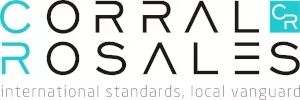Notorious marks are those well-known in the specific sector of the public for which said products, services, or activities are intended, and are used to identify and protect such brands. Renowned brands are widely known by the general public.
Both notorious marks and renowned brands must maintain high commercial traffic to obtain the fame and prestige that characterize them, and this requires a large investment of time, resources, and publicity by their owners.
The concept of a renowned brand is not regulated in Decision 486 of the Andean Community; in a preliminary interpretation, its Court of Justice recognized renowned brands to be those that are known by the general public, outside of merely the relevant sector. As a result, such brands completely break with the principles of registration, territoriality, and specialty, protecting them over all products or services, as opposed to a notorious mark.
The Andean Community Court of Justice has referred to the concept of a renowned brand for several years; and in Preliminary Interpretation 01-IP-87, it analyzed renowned brands, indicating the parameters of its knowledge: "[...] the above-mentioned renowned brand must be known by different groups of consumers in different markets, and not only within a particular group, as is the case with notorious marks. Therefore, it can be deduced that every renowned brand is notorious, but not every notorious mark is a renowned brand, as the classification of the latter is more demanding"1
In Interpretation 41-IP-98, the Court recognizes renowned brands, connecting it to fame, prestige, and goodwill, clearly differentiating it from a notorious mark: "Similarly, "through means of the regulations in question, they have been granted characteristics foreign to their nature and typical of renowned or very well-known brands, by extending their protection to all classes, including to denote different products or services."2
In its recent case law, the Court exemplifies trademarks that, due to their positioning and global notoriety, are recognized as renowned brands, as follows: "Renowned brands (for example: Coca Cola, Toyota, Facebook, Google, etc.) are known by practically almost the entire general public, by different types of consumer segments and suppliers, including those who do not consume, manufacture, or market the product or service identified with the renowned brand."3
Likewise, it emphasizes that, given its nature, a renowned brand does not need to be proven: "Notoriety must be proven by the party alleging it, in accordance with Article 228 of Decision 486. Meanwhile, renowned brands do not need to be proven, since under the general theory of process, this is called a "notorious fact." Here, "notorious facts" are known ex officio and do not require evidentiary activity (notoria non egent probatione), so do not require evidence"4
Over the last thirty years, in its preliminary interpretations, the Court has differentiated renowned brands from notorious marks, thus establishing the foundations for a possible regulation of this type of brand within the Andean Community. "Renowned brands, meanwhile, are not regulated by Decision 486, but rather, due to their nature, receive special protection in the four member countries."5
Under this line of case law, in recent resolutions, the Collegiate Body of Intellectual Rights has ratified the character of renowned or very well-known brands that, due to their prestige and global knowledge, deserve the special protection that case law and doctrine grant them to protect their value from attempted misuse by third parties in a clear unfair use of said character. This also helps to protect the rights of consumers.
In procedures in which third parties tried to make use of the very well-known UBER and MAC brands, the Ecuadorian office confirmed their wide recognition by the general public, as well as the reinforced protection that must be given to them, establishing: "the UBER brand is one recognized among the population, not only by the relevant sector of consumers (users of the digital application). By accession, this type of brand is protected not only from the risk of confusion and association, but also from the risk of dilution and unfair use of its prestige"6
Similarly, given the misappropriation of the trade name MAC ACCES BY MOBILE STORE MAS LOGOTIPO, it determined the risk of confusion, association, dilution, and unfair use that this registration would imply due to the very well-known nature and recognition of the MAC brand worldwide: "this type of brand is protected not only from the risk of confusion and association, but also from the risk of dilution and unfair use of its prestige"7
In conclusion, the resolutions of the Andean Court of Justice have paved the way for the competent offices of the member countries of the Andean Community to establish clear rules for the recognition and protection of renowned brands.
Footnotes
1. Prejudicial Interpretation 01-IP-87
2. Prejudicial Interpretation 41-IP-98. Process 219099, marks SUPERMAN v. SUPERMANI. Consulting country Colombia.
3. Preliminary Interpretation 196-IP-2020. Case 7467-2017-0-1801-JR-CA-26, trademarks TFQ LA TABERNA DE FRANCO Q vs SANTIAGO QUEIROLO S.A.C. Consulting country Peru
4. Preliminary Interpretation 23-IP-2021. Process 570061-2014/DSD, marks ZAPATA PERU AGROINDUSTRIAS ZAPATA S.A.C. v. CATENA ZAPATA Consulting country Peru
5. Prejudicial Interpretation 123-IP-2021. Process SD2016/0059251, marks ZOO v. BIO ZOO. Consulting country Colombia.
6. Resolution No. OCDI-2022-159. Collegiate Body of Intellectual Rights. SENADI-2018-65615 process, marks UBER v. UBER FRUITS.
7. Resolution No. OCDI-2022-272. Collegiate Body of Intellectual Rights. OCDI-2021-191-AN process, marks MAC v. MAC ACCES BY MOBILE STORE MAS LOGOTIPO.
The content of this article is intended to provide a general guide to the subject matter. Specialist advice should be sought about your specific circumstances.

